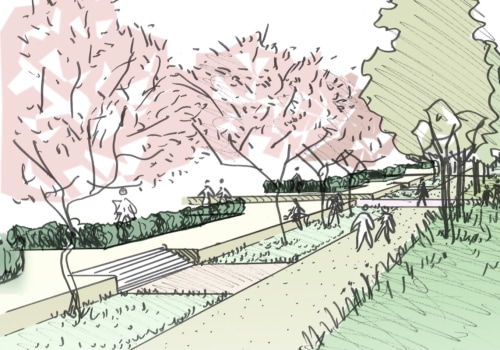Landscape engineering, a discipline that blends the design and engineering aspects of creating and maintaining outdoor spaces, faces numerous challenges. These challenges stem from the complexity of integrating functional, sustainable, and aesthetically pleasing elements into landscapes, especially in the context of commercial property maintenance. This field requires a comprehensive understanding of ecology, civil engineering, and design principles to successfully navigate the intricacies of large-scale landscape projects. Each project presents its own set of challenges, from environmental considerations to regulatory compliance and the balancing act of meeting client expectations while adhering to budget constraints.
One of the primary challenges in landscape engineering is dealing with the variability of natural systems. Engineers must account for factors such as soil composition, water availability, and climate conditions, all of which can drastically affect the viability of a project. This complexity is magnified when working on commercial property maintenance, where the scale and usage of the land can impose additional demands on the landscape. For example, ensuring adequate drainage to prevent flooding and erosion is critical in areas with heavy rainfall, requiring sophisticated engineering solutions that blend seamlessly with the landscape design.
Environmental sustainability poses another significant challenge. As awareness of ecological issues grows, landscape engineers are increasingly tasked with creating designs that not only meet the current needs of the property but also contribute positively to the environment. This can involve incorporating green infrastructure, such as rain gardens and green roofs, which help manage stormwater runoff and reduce the heat island effect. However, integrating these features into existing commercial landscapes often requires innovative engineering solutions to retrofit these spaces without compromising their functionality or aesthetic value.
Regulatory compliance is also a critical concern in landscape engineering. Projects must adhere to a myriad of local, state, and federal regulations concerning land use, water use, and environmental protection. Navigating these regulations can be a daunting task, particularly for commercial property maintenance, where the stakes are high. Landscape engineers must stay abreast of changing laws and ensure that their designs comply with all applicable codes, which can vary widely depending on the location and scope of the project.
Client expectations present another layer of complexity. In the commercial sector, property owners and managers expect landscapes that are not only visually appealing but also functional and cost-effective to maintain. Balancing these demands requires a deep understanding of both the technical and aesthetic aspects of landscape engineering. Engineers must work closely with clients to develop realistic expectations and communicate the trade-offs involved in different design choices, ensuring that the final project aligns with the client's vision and budget.
Furthermore, the challenge of commercial property maintenance demands constant attention and adaptation. Landscapes are living systems that change over time, requiring ongoing maintenance and occasional redesign to accommodate growth, changing usage patterns, and environmental conditions. Landscape engineers play a crucial role in developing maintenance plans that are both effective and sustainable, ensuring the long-term health and beauty of the property.
Technological advancements offer both opportunities and challenges in landscape engineering. While new tools and techniques can enhance the efficiency and effectiveness of landscape projects, keeping up with these developments requires continuous learning and adaptation. Engineers must be proficient in the latest software for design and modeling, understand the capabilities of new materials and construction methods, and be aware of innovations in sustainable practices. This constant evolution of the field demands a commitment to professional development and a willingness to embrace change.







